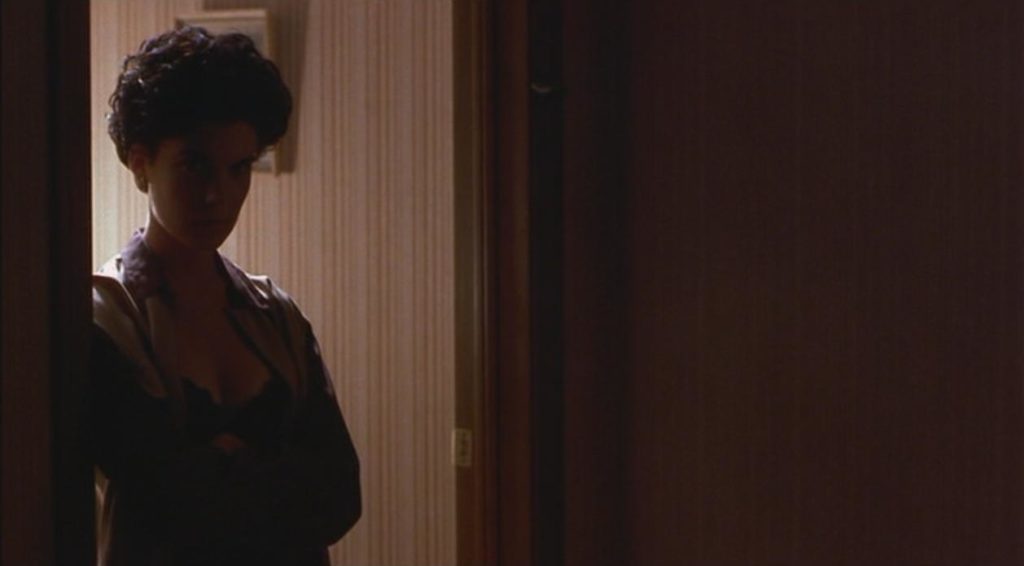
Film Noir is a term created by critics to designate a particular kind of film made in Hollywood after WWII. Film Noir refers to crime films or thrillers that utilize a visual palette that is derivative of German Expressionism. The popular attribution of German Expressionism to the thriller genre is not surprising considering the filmmakers that first employed this tactic had been working in Germany at the height of the Expressionist movement and only came to Hollywood to either escape the Nazis or to find bigger and better financing. Film Noir as a genre specific label only occurred after the fact, once these kinds of films had ceased to be popular. To this day there is great debate as to when Film Noir began and when it ended. Most critics label Robert Siodmak’s 1946 film The Killers as the originator of the genre and Orson Welles’ Touch Of Evil (1957) as its conclusion. Because Film Noir was not created by the filmmakers as a specific artistic movement, no one can be certain. What is particularly troubling about the genre specifications is that the film has to be American, when in reality Fritz Lang’s Dr. Mabuse films and his film M (1931) fit the specifications perfectly. Of course Lang’s German films lack the pulpy American dialogue associated with Film Noir, therefore only a handful of his films (Scarlet Street and The Big Heat for instance) actually receive this label. When critics or filmmakers refer to a film in the sixties and afterwards as neo-noir (Roman Polanski’s 1975 film Chinatown is a good example), they are simply citing a similarity between a contemporary film and the American films of this nature produced in the forties and fifties.
In 1993 John Dahl completed the pivotal neo-noir film of the 1990s, Red Rock West (Dahl penned the screenplay with his brother Rick Dahl). Red Rock West marked a return to the thriller genre for the Dahl brothers; following up their film Kill Me Again (1989), starring Val Kilmer and Michael Madsen. The criticism against Kill Me Again appears to be the driving factor behind the heavy stylization of Red Rock West.
Red Rock West follows do-gooder drifter Michael (Nicolas Cage) and his time in the small Wyoming town for which the film is named. Michael arrives at the local bar to be greeted by what he believes is a job opportunity from the proprietor. It soon becomes clear that the barkeep Wayne (J.T. Walsh) has mistaken Michael for a hit man who he has hired to kill his wife Suzanne (Lara Flynn Boyle). Michael accepts the job, but decides to warn Suzanne, who in turn offers to pay him to kill Wayne instead. Michael decides to leave Red Rock West only to hit a man with his car just outside of town. Michael takes the man (Suzanne’s lover) to the hospital where he is arrested by the sheriff, who happens to be Wayne. Michael escapes with the aid of a passerby named Lyle (Dennis Hopper) who is the real hit man hired by Wayne. Once the identities are all revealed, Michael escapes again, and sets off to save Suzanne. From there, the narrative continues to twist and turn in a bizarre series of coincidences and melodramatic reveals recalling Out Of The Past (1947).
The Dahl brothers have skillfully constructed an extremely complex narrative that upon its transition from paper to screen has manifested itself with a natural fluidity. The main reason for this is the level of self-awareness the film exhibits. The actors play their parts as straight as can be, but the plot twists are so on the nose that the film transforms itself from an unassuming Independent production into a case study of an over played genre. The campiness of Hopper’s wardrobe and the moral posturing of Nicolas Cage create a subliminal focus upon the very devices of a narrative through which the characters are traversing, subverting the drama of the film.
Accepting the artifice of the neo-noir genre is the smartest thing about Red Rock West. The Dahl brothers know from Kill Me Again that the more archetypal the characters and the more routine the plot twists, the more acceptable the film will be to the audience, the more familiar. Rather than disguise the film in pretentions, the Dahl brothers have set about revealing this phenomenon to their audience. In print, this may sound like pretension on the part of the filmmaker, but it plays more like a thumbing of the nose to other filmmakers who continually retread the same ground in the genre.
What continues to be a highlight of this film is its casting. Using Nicolas Cage in the lead helps evoke the machismo of David Lynch’s Wild At Heart (1991) while Dennis Hopper brings with him all of the psychopathic energy he instilled into Lynch’s Blue Velvet (1986). Similarly, casting Lara Flynn Boyle as the femme fatale deliberately contrasts her role as Donna on Twin Peaks (1990-1991). The cast in total becomes a deliberate evocation of the American filmmaker most associated with the neo-noir genre, David Lynch. It also gives the film the illusion of familiarity that allows its narrative and its characters to be so much more believable to the audience. This device is not dissimilar to Jean-Luc Godard’s casting of Eddie Constantine in Alphaville (1965); and like Godard, the Dahl brothers have subverted the genre in which they are working.
Red Rock West is less a serious recycling of neo-noirism and more of an analysis that eliminates any illusions with regards to the legitimacy of the genre of neo-noir. That few critics cited this when the film was first released is surprising. Of all the films made in the nineties with a preoccupation for old crime films, it seems the best have been overlooked. Certainly Red Rock West deserves a serious reassessment.
